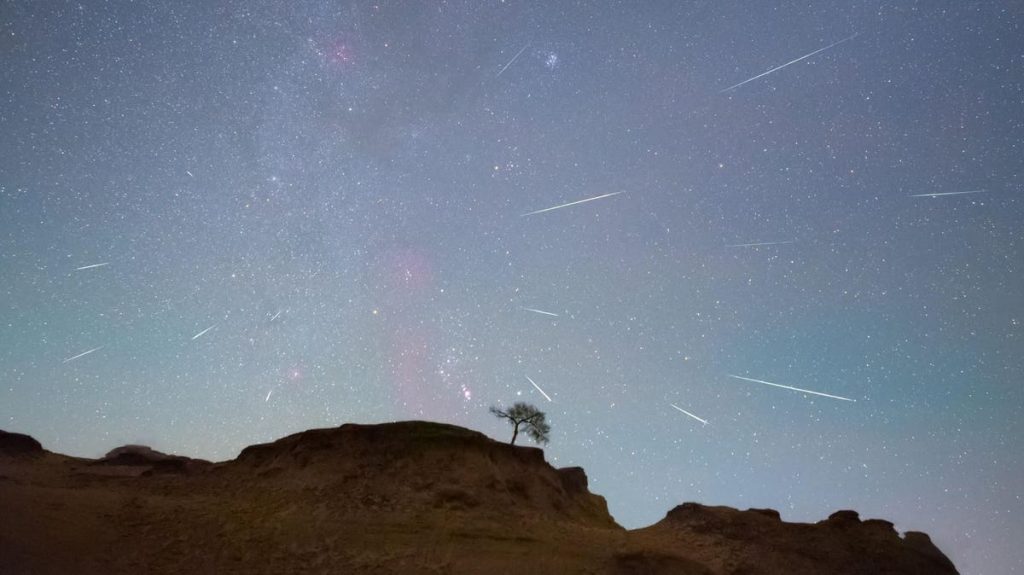The Orionids, the most prolific annual meteor shower caused by Halley’s comet, has begun just as the “giant snowball” is on the cusp of returning to the inner solar system.
The Orionid meteor shower runs from September 26 to November 22 in 2023, though the date to be most aware of is its peak in the pre-dawn hours of Saturday, October 21. The maximum number of “shooting stars” per hour you can expect to see that night is 20, according to the American Meteor Society.
Meteor showers are caused by dust and debris being left in the inner solar system by comets. When streams of material drift into Earth’s orbital path around the sun a meteor shower can result. Meteors are small pieces of rock or dust that burn-up as they strike Earth’s atmosphere.
Here’s everything else you need to know about the Orionid meteor shower in 2023:
What Causes The Orionid Meteor Shower
For the Orionids—as well as the Eta Aquariids in April—the root cause is the world’s most famous comet—1P Halley. Orbiting the sun every 76 years or so, it was last seen in 1986 and is next due to loop around the sun in 2061.
That makes 2023 the halfway point when Halley’s comet is at aphelion—the farthest it gets from the sun, beyond the orbit of Neptune. The actual date it begins to return is December 9, 2023.
How To See The Orionid Meteor Shower
Given that a near-First Quarter Moon will make the pre-midnight night sky bright, the Orionids will be best seen in the pre-dawn hours from a location away from light pollution. The moon will set in the early hours.
If you do make the effort to go see the Orionids, also remember to take snacks, drinks, a reclining chair and plenty of warm layers. You absolutely must avoid using binoculars or a telescope—either will hugely restrict your view.
Don’t use your smartphone—its white light will kill your night vision—and keep your eyes on the night sky (anywhere is fine because “shooting stars” can appear all over). Take lots of breaks.
How To Photograph The Orionid Meteor Shower
A great way to observe the Orionids is to set up a DSLR or mirrorless camera in your backyard and have it take hundreds of 30-second exposures. That way it can more easily capture a “shooting star.”
You’ll need a wide-angle lens and a tripod, with settings of about f/2.8 aperture and ISO 800 recommended. With your camera on infinity focus, experiment with the settings —in manual mode—to create a great-looking image of the night sky. Then simply put it in continuous mode and leave it to take hundreds of images. Check them the next day for any image of “shooting stars.”
After The Orionid Meteor Shower
Next up after the Orionids is the Leonid meteor shower, which peaks in the early hours of November 18, 2023. Known for bright meteors with persistent trains, the Leonids also number up to 2o “shooting stars” per hour at the peak. This year’s Leonids will be arguably more interesting than the Orionids because the moon will be in a waxing crescent phase, meaning a dark sky after midnight.
However, there’s also a chance of an outburst by the lesser-known Andromedid meteor shower in early December. In a week of moonless night skies, up to a whopping 200 “shooting stars” per hour could be seen at the peak, according to research. It’s difficult to know for sure, but the Andromedids did produce thousands of meteors per hour in 1872 and 1885.
Wishing you clear skies and wide eyes.
Read the full article here








